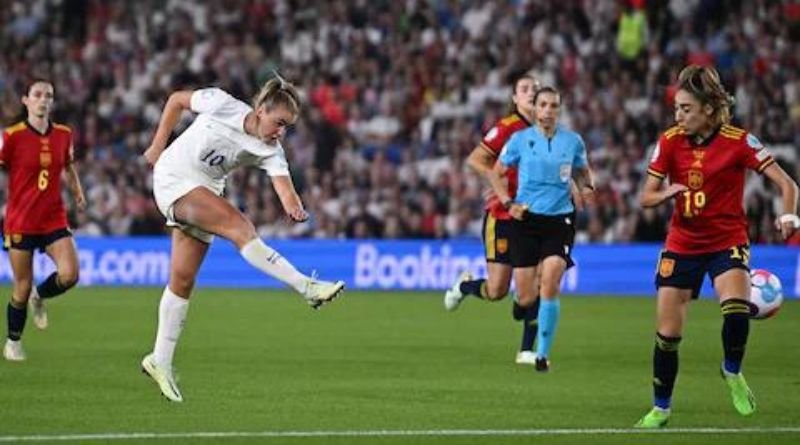The Influence of Match Status on Ball Possession in High-Performance Women’s Football
This study’s goal was to investigate how the situational match status variable affected which teams had control of the ball at the 2015 FIFA Women’s World Cup. 3,740 ball possessions that were made by the teams during the 52 games that made up the championship have been gathered and examined. Teams were split into successful and failed ones. Three different analyses were performed: a univariate analysis for both groups using categorical and continuous variables; a bivariate analysis using chi-square tests and the exact Fischer test; and finally, a multivariate technique like decision trees. The results that are currently available clearly distinguish the two groups under consideration. There are notable contrasts between winning and losing in particular. The post hoc test’s findings revealed that unsuccessful teams rarely possess the ball while in a winning match situation; instead, most possessions are made when they are trailing. Instead, successful teams create more possessions during wins than during losses. Additionally, spend more time keeping the ball in their offensive zone and making more passes there.
According to the decision tree’s findings, the unsuccessful teams have a greater percentage of ball possessions in the forward and middle lines with a draw during the first half than they do during the second when the match is less favorable. Instead, in the first half with a draw, the winning teams have more ball possessions, while in the second it occurs with a favorable match status.
Introduction
Men’s football performance analysis is now experiencing growth in terms of studies, both quantitatively and qualitatively. One of the highest goals of scientific research must be to identify the routes or courses that increase a team’s chances of success. Football, unlike other sports like basketball or handball, is known for its low score on the scoreboard. Football situational analysis can help teams and individuals score more goals and be more successful.
It has been demonstrated that situational factors like match location, match status, and opposition quality have an impact on the actions taken by male soccer players during games (Taylor et al., 2008; Lago-Peas, 2009; Mackenzie and Cushion, 2013; GGarciaRubio et al., 2015; Liu et al., 2015; Sarmento et al., 2017).
Match status is one of the situational elements examined in high-performance football(winning drawing, or losing). The temporary outcome of the game at the time a behavior is recorded determines the match status of a game (Bloomfield et al., 2005). Players and teams adjust their bbehaviorin rin esponse to the demands of the scoreboard, which is how this situational variable in the game manifests its effects.
Different levels of performance are impacted by these behavioral modifications caused by match status. Male soccer players on high-performing teams have been demonstrated to engage in much fewer high-intensity activities when they win than when they lose or draw (Bloomfield et al., 2005; Lago et al., 2010; Castellano et al., 2011; Lago-Peas, 2012). Some explanations for this tendency include the fact that the participants control their physical capabilities during the games and don’t always exert their full physical potential during the conflict.
According to Lago-Peas (2012), a team feels at ease when they are ahead on the scoreboard, and players may adopt a ball retention strategy and play the game at a slower pace. Players, on the other hand, attempt to increase their physical performance when the outcome is a loss to tie or win.
There are also excellent outcomes in terms of ball possession at the tactical level. The best teams maintained a larger proportion of ball possession during the matches, and their game pattern was more stable, according to preliminary research that looked at the variable “ball possession” alone (Lago-Peas and Dellal, 2010). Additionally, local teams possess the ball more than visiting teams do (Lago and MMartin 2007), and successful teams spend more time with the ball in the first half (Casal et al., 2017). Additionally, the home teams possess the ball for a longer period thanthe visiting teams (Lago and Martin, 2007). Because successful teams spend more time with the ball in the first half of the game (Casal et al., 2017). According to research by Jones et al. (2004), successful teams keep the ball for noticeably longer than unsuccessful ones, and the former keep it in the middle of the field while the latter retained it in the middle of the field of play. According to AGematriaet al.’s (2019b) study, there is a significant correlation between a high number of passes made during possession and shooting (p 0.043) and sendings to the area (p 0.000). Additionally, it discovers statistically significant results linking ball possessions that start on the field of the home team with goal actions (p 0.023) and shot to the goal (p 0.000). Finally, Casal et al. (2017) find that having the ball in the middle of the offensive zone enhances the chance of winning by 1.72 times.
In scientific literature, there is a lot of discussion on how to link ball possession to match status. Numerous studies demonstrate how teams’ actions vary in response to the demands of the scoreboard. On the one hand, research by Jones et al. (2004), Lago and MMcMartin2007), Lago-Peas (2009), Lago-Peas and Dellal (2010), and Barreira et al. (2011) show that teams that are losing on the scoreboard tend to have longer periods of possession. Every 11mminutethat the team is losing, its possession increases by 1%. According to Bradley et al.’s (2013) simulation of possession, if a team was losing (in a match status) for the full 90 minutes of play, the estimate of possession would be 66.97%.
Contrary to these findings, studies by Bloomfield et al. (2005), Taylor et al. (2008), and Casal et al. (2017) found that winning teams have the longest periods of possession time. The different playstyles of the teams and the type of competition are some of the potential causes of these discrepancies.
According to Lago-Peas (2009) and Barreira et al. (2011), teams have more possession of the ball in defensive zones when the match is winning, and more possession of the ball in the offensive third of the field when the match is losing. Santos et al. (2017) and Almeida et al. (2014) both provide evidence that unsuccessful teams tend to defend in more specialized regions of the field. Contrarily, the research by Casal et al. (2019) distinguishes between winning and losing teams at the UEFA Euro 2016 and the length of ball possessions. They notice that when a team is losing on the scoreboard, their possessions are longer.
While in the winning teams, the match status variable does not affect the length of time the ball is in play. Additionally, they discovered that effective teams tend to have longer offensive zone possessions with a score in their favor as well as longer defensive zone possessions with a draw score. Teams that struggle will have longer defensive zone possessions with a draw score.
The statistics allow it to be confirmed that the situational match status variable alters how the male soccer teams behave during contests. However, this variable hasn’t been tested in women’s football yet. Therefore, the goal of this study was to understand how the match status variable behaves and influences ball possession in elite women’s football. Three different analyses were done for this: Initially, a univariate analysis was performed with the categorical and continuous variables chosen; subsequently, chi-square tests and Fischer’s exact tests were used to examine the relationship between the described variables, using the match status variable as a point of comparison; and finally, a multivariable technique based on decision trees was used.
Materials and Methods
Design
A nomothetic, intersessional follow-up, and multidimensional design were used among the potential designs that observational methodology can offer. The active, non-participant systematic observation was done using an observational sampling technique called “all occurrence.”
Sampling
All of the FIFA Women’s World Cup 2015 matches have been evaluated to control the situational variables that may be impacted by the match status between successful and unsuccessful teams. High-level football ball possession is the study’s unit of analysis. Assuring respect for bbehaviorspontaneity and registration in its natural environment, encounters were recorded from public images broadcast on television and through a post-event record. The use of public images for research purposes is permitted, per the National Commission for the Protection of Human Subjects of Biomedical and Behavioral Research (1978).
A convenience sample served as the observation sample (Anguera et al., 2001). The 52 games that make up the world championship, specifically the group stage, out of 16, quarterfinals, semifinals, and finals, have a total of 3,740 events recorded about them. 780 of the total events have been eliminated, or possessions that resulted in a tie. Because these games are being played in a direct elimination format, both teams must use offensive attack strategies to get in.
Observational Instrument
A field format and category system were combined to create an ad hoc observation instrument, as suggested by Anguera et al., by three national football coaches and experts in football research.
Data Notation
Different factors have been presented and empirically compared for criteria selection in earlier publications. Consult Castellano (2000) and Castellano and Hernández-Mendo for the category definition for the Interaction Context (COI) variable (2003). The Casal et al. (2017) criteria were applied for the coding and registration of the Possession Zone and Match Outcome variables. It has been suggested by Lago-Peas and Dellal (2010) to use the match status variable. A change has been made to the proposal of Maneiro and AGematria(2018) and Maneiro et al. (2019a) for the registration and coding of the Move outcome variable. According to the ideas of Lago et al. (2010) and Casal et al. (2015), the match result (win or lose) has been the criterion used to divide teams into two groups, successful and unsuccessful. Thus, all teams that won their games were deemed successful, while all teams that lost their games were deemed failures.
Procedure
Four observers were chosen for the data collection, three of whom were national football coaches with PhDs in physical activity and sports sciences and more than five years of experience in the use and application of observational methodology. A methodologist with years of experience and relevant publications in the field, one of the authors is also an expert in observational methodology.
The observers were instructed during eight training sessions before the coding procedure (Manolov and Losada, 2017), using the consensual agreement criterion among observers and receiving a specially created observation protocol. The IBM SPSS Statistics 25 program was used to carry out the interobserver concordance analysis by Cohen’s (1960) Kappa coefficient for each of the criteria, and the overall value was very good (0.83) by Fleiss et al. scales. The R program version 3.4.2’s Compare Groups library was utilized for the remaining portions of the analysis.
Statistic Analysis
A first univariate analysis is conducted using the categorical variables Half.t time, Start. f orm, COI, Intention, ZC, and Move. o outcome as well as the continuous variables MD, MO, and Time. p possession (in seconds), and pass to compare the “successful” and “not successful” groups in the women’s football teams (Tables 2, 4). We utilized the variable Final.s core, which contains three categories w (win), d (draw), and l to separate the groups “success” and “not success” (defeat). W (win) and L (loss) were used to categorize these teams as “successful” or “not successful,” respectively. The Shapiro-Wilks test was used to determine whether continuous variables had a normal distribution.
After that, groups conducted a bivariate study using Match. status as a reference variable to determine the association between the aforementioned variables. Fisher’s exact tests or chi-square tests were used as needed for the collection of categorical variables. By calculating the frequencies and corresponding percentages the analysis was strengthened. The median and the Q1 and Q3 values were calculated for the continuous variable. Time was gathered in seconds for continuous variables
Following a procedure outlined by Benjamini and Hochberg, comparisons between pairs were explored using post hoc testing (1995).
In the end, a multivariable technique built on decision trees was used (Figures 1, 2). It is a non-parametric approach, which means that no assumed distributions are present. Without the need for data transformation, it has strong asymmetries and easy control of lost values. It is a reliable method for aanalyzingoutliers and additionally enables the examination of sequential decisions using associated probabilities. For this, the chi-square automatic interaction detector (CHAID), a statistical and multidirectional tree algorithm that quickly and effectively scans data and generates segments and profiles in comparison to the intended outcome, was utilized as a growth method. The predictor variable with the strongest interaction with the explained variable is selected by CHAID at each stage. If each predictor’s categories do not significantly differ from the predictive variable, they merge.
Results
To choose the factors that differ from the variable “Match.s tatus” in unsuccessful teams, the analysis starts with a study of unsuccessful teams. The variables “Half.t ime,” with a p-value of 0.001, and “Intention,” with a p-value of 0.001, are significant in this scenario (Table 2).
The Shapiro-Wilks test revealed a p-value of 0.001 for the variables “MD,” “MO,” “Time. possession,” and “Pass,” indicating that they do not have a normal distribution.
To determine whether there are statistically significant differences in ball possession between successful (n = 1,730) and unsuccessful (n = 1,230) teams, Pearson’s chi-squared test was used. Results indicate that there are substantial differences (p 0.000) between the two groups in this instance.
Given the relevance found in other studies, the criterion variable Match. status has been used as a reference in the bivariate study for the “unsuccessful” teams. As astounding findings, we can observe that the Half. time variable significantly differs between the ft and st categories (p 0.001).
These variations are seen between the pairs “lose-win” and “lose-draw” (0.001) (0.001). There were no discernible differences between the Start. form and COI variable. The pair “draw-lose” shows significant differences in the Intention variable (p 0.001). (0.001). In practical aspects, match status has a big impact on tactical intention and halftime. There were no discernible differences between the levels of the Match. status category and the MD, MO, ZC, and Time. possession, Pass and Move. outcome variables.
Last but not least, using decision trees for unsuccessful and successful teams, a multivariate analysis was conducted with all study variables included.
initial root node There are two options at halftime. The first is the category produced by the COI variable, which is a second node in the algorithm. This is split into two terminal nodes in turn. They have possession of the ball in the middle (MA, MM, and MR) and forward (AA, AM, and AR) field lines in a sample of 514 possessions with a 38.9% error and a drawing marker (60% of the chances of having the ball).
A second terminal node records ball possessions primarily in the delayed lines, with a sample size of 100 possessions and an error rate of 44% in an unfavorable match situation (RA and RM). Teams have more ball possessions in the second half when the score is unfavorable (almost 80%).
The first root node is the source of the second category, ST. A single terminal node is gathered by Half. time, with a sample size of 616 moves and a 17.2% error. More than 80% of team possessions and team actions result in a loss.
The continuous variables “MD,” “MO,” “Time. possession,” and “Pass” in the “successful” female group were subjected to a Shapiro-Wilks analysis, and a p-value of 0.001 was obtained, demonstrating the lack of a normal distribution adjustment.
Half-time significant differences for the “successful” teams in the bivariate analysis were observed in the pairs of draw-win (0.001) and lose-win (0.001) findings (0.010). The lose-win (0.010) and draw-win (0.001) pairs show the MO variable to have substantial variations (0.001). In the draw-win pair, the ZC variable exhibits substantial variations (0.003). (0.007). Regarding the draw-win pair, the variable PASS exhibits a significant association (0.017). (0.041). In practical terms,
According to the match half (half. time), the zone of possession, and the number of passes made, it is feasible to remark that the match status affects the ball possessions.






